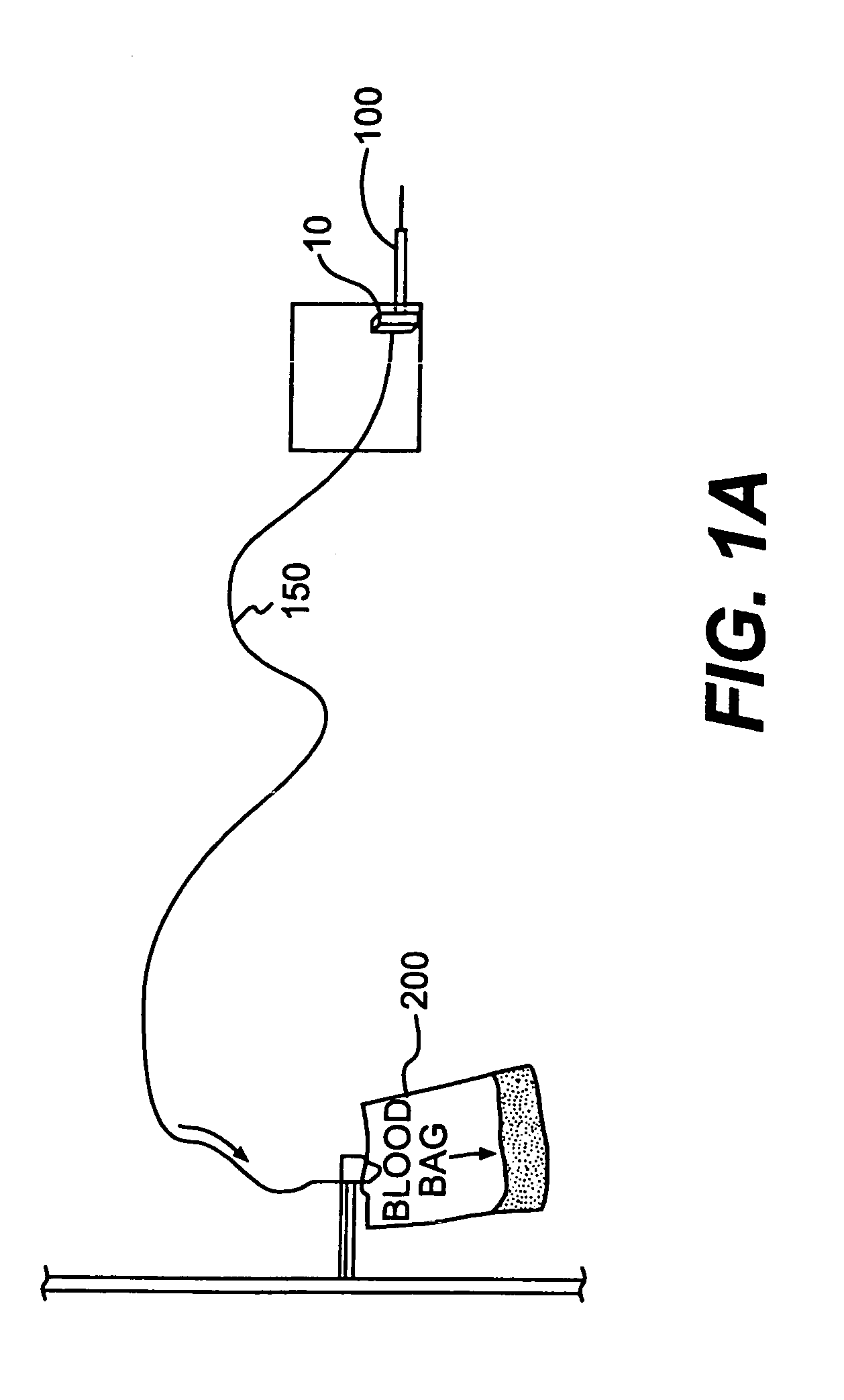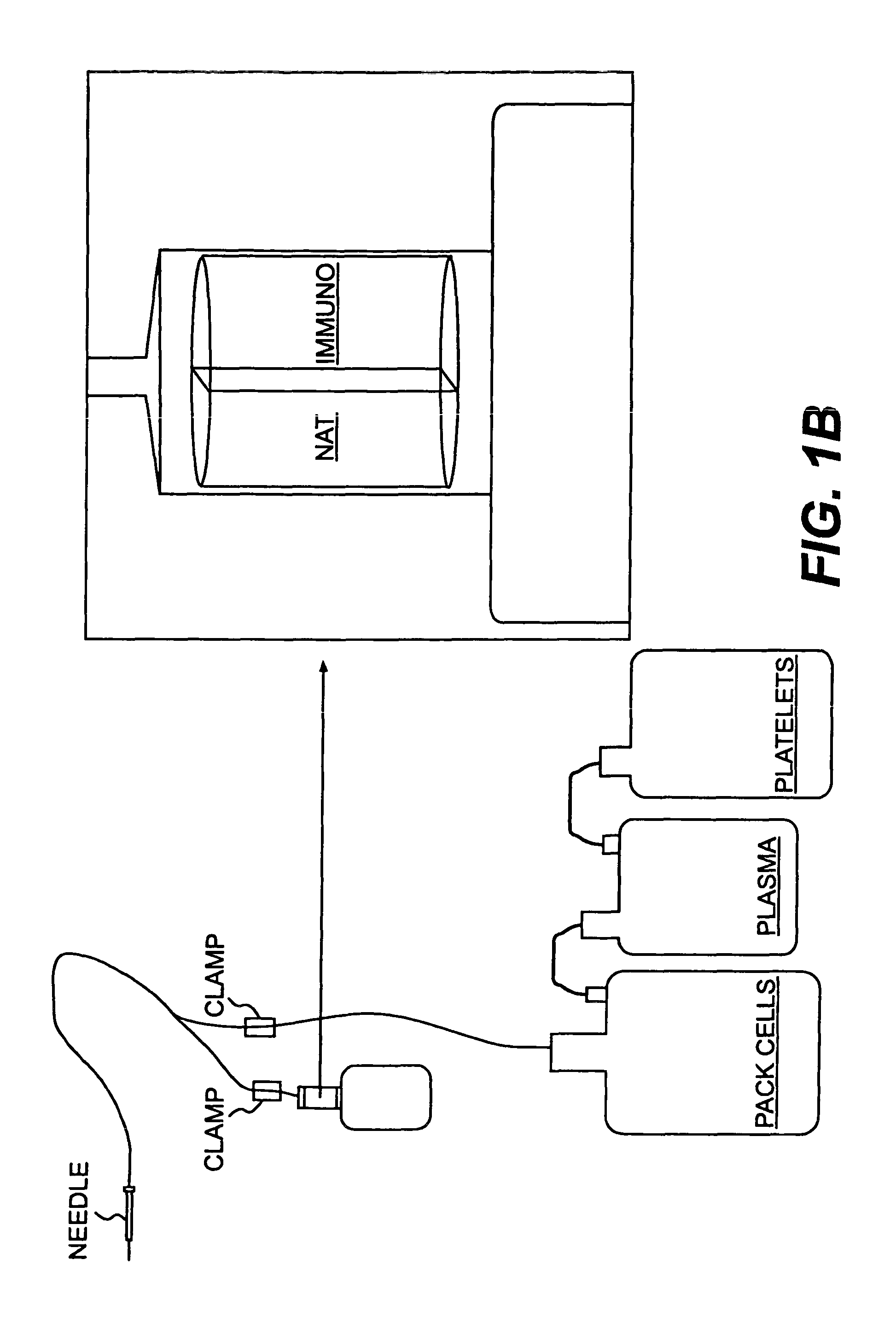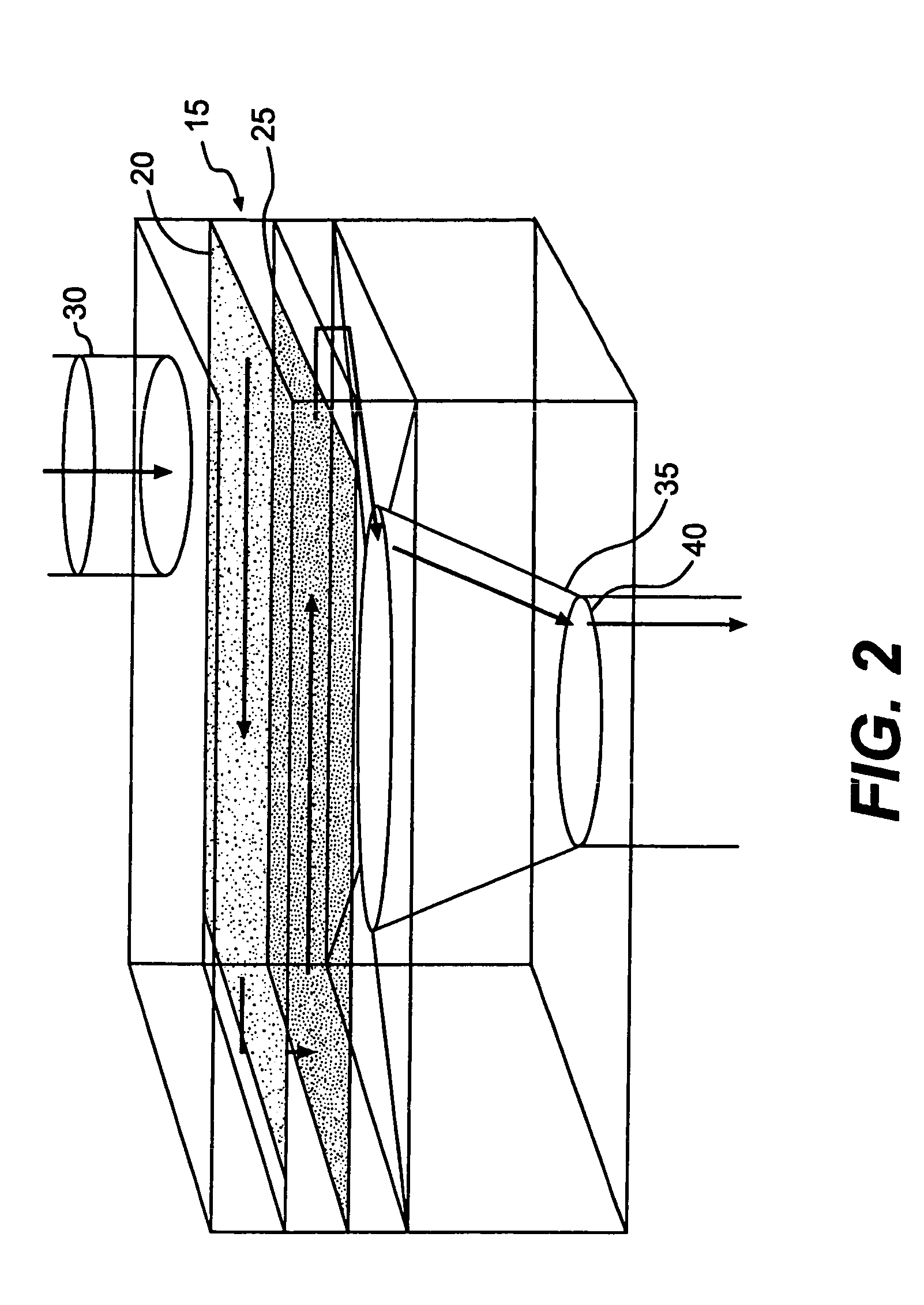Device and method for in-line blood testing using biochips
a biochip and in-line technology, applied in the field of blood screening, can solve the problem of creating a sampling risk by using such small fractions
- Summary
- Abstract
- Description
- Claims
- Application Information
AI Technical Summary
Benefits of technology
Problems solved by technology
Method used
Image
Examples
example 1
[0106]This example demonstrates the use of a biochip coated with antibody to capture corresponding antigen in blood and detection of the target antigen by mass spectroscopy.
[0107]A biochip (Ciphergen PS20 Protein chip) was covalently bound to a mouse monoclonal antibody against HIV P-24 core protein. The biochip then was placed in a tube where 12 ml of human blood was circulated a flow rate of about 30 ml / min at 37° C., to mimic the flow rate and temperature of a normal blood drawing. See FIG. 13. HIV P-24 antigen was spiked in the blood at a concentration of 0-200 ng / ml. After 10 min of circulation, the chip was removed and the bound antigen was detected by mass spectroscopy (Ciphergen Protein Chip Reader).
[0108]The results showed that antigen can be detected at a concentration of about 8 ng / ml in a 12 ml blood sample. FIG. 14 depicts a typical result.
example 2
[0109]This example demonstrates the use of a biochip coated with antigen to capture corresponding antibody in blood and detection of the target antibody by mass spectroscopy.
[0110]A biochip (Ciphergen PS20 Protein chip) was covalently bound to HIV P-24 core protein. The biochip then was placed in a tube where 12 ml of human blood was circulated at a flow rate of about 30 ml / min at 37° C., to mimic the flow rate and temperature of a normal blood drawing. Mouse monoclonal antibody against HIV P-24 was spiked in blood at a concentration of 0-20 ug / ml. After 10 min. of circulation, the chip was removed and the bound antibody was detected by mass spectroscopy (SELDI-MS from Ciphergen).
[0111]The results showed that antibody can be detected at a concentration of about 1 ug / ml in a 12 ml blood sample. FIG. 15 depicts a typical result.
example 3
[0112]This example demonstrates the use of an antibody against viral surface protein to capture a virus in blood, followed by detection of viral nucleotides using a nucleic acid technology assay.
[0113]West Nile virus was captured by an Elisa assay. An Elisa plate was coated with West Nile Virus Monoclonal Antibody 3A3 (from BioReliance, Rockville, Md.) as a capture antibody. Purified West Nile virus samples then were added. After incubation, a polyclonal antibody (rabbit anti mouse West Nile virus, from BioReliance, Rockville, Md.) was added and incubated. The detection antibody was goat anti rabbit antibody conjugated with HRP. Other anti-West Nile virus antibodies, such as mouse monoclonal antibody 3.91D, also have been shown to capture West Nile virus. See, e.g., Hunt et al., 2002.
[0114]Table 1 (below) summarizes results of the virus-capture procedure.
[0115]
TABLE 1Capture virus using monoclonal antibody.12 Viral3 Vero4 SampleVirusAntigen PreM-3Cell Supernatantdiluent1.1000.2950.2...
PUM
| Property | Measurement | Unit |
|---|---|---|
| temperature | aaaaa | aaaaa |
| pore size | aaaaa | aaaaa |
| pore size | aaaaa | aaaaa |
Abstract
Description
Claims
Application Information
 Login to View More
Login to View More - R&D
- Intellectual Property
- Life Sciences
- Materials
- Tech Scout
- Unparalleled Data Quality
- Higher Quality Content
- 60% Fewer Hallucinations
Browse by: Latest US Patents, China's latest patents, Technical Efficacy Thesaurus, Application Domain, Technology Topic, Popular Technical Reports.
© 2025 PatSnap. All rights reserved.Legal|Privacy policy|Modern Slavery Act Transparency Statement|Sitemap|About US| Contact US: help@patsnap.com



